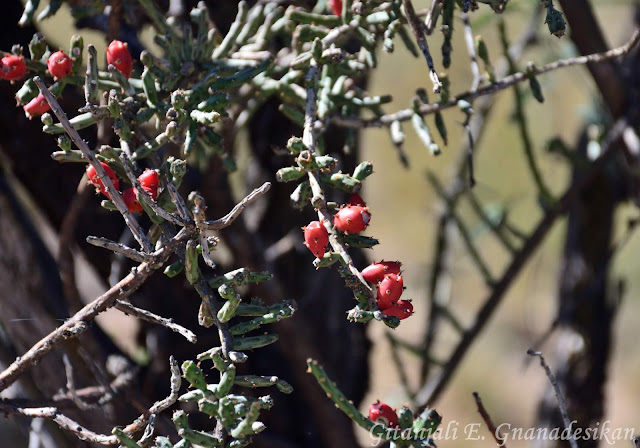Our first sighting was of this Anna's hummingbird (Calypte anna). He was buzzing around busily and chattering.
While you might doubt my identification in these photos (I did), just wait until the light hits the feathers on his head just right, and suddenly he looks like a totally different bird!
This brightly painted red naped sapsucker (Sphyrapicus nuchalis) was hanging around the same tree as the hummingbird, although he soon left while the hummingbird remained.
Morning-glories (Ipomoea) such as these are common in these parts.
This one looks remarkably similar and yet is not at all closely related; it is blue or Lewis flax (Linum lewisii).
I particularly like the common name of this one: trailing four o'clock (Allionia incarnata, or perhaps choisyi), also sometimes called trailing windmills. What looks like one flower is actually a cluster of three.
Here is a prime specimen of a desert Christmas cactus (Cylindropuntia leptocaulis), so named because it retains its bright red fruits into the winter.
There were several grasshopper-like insects (orthoptera) jumping and flying about. I think this is an elegant bush katydid (Insara elegans), because of the white bands across the body and wings.

This one might be a white-lined bird grasshopper (Schistocerca albolineata).
This one may be in the genus Conozoa.
I am slowly getting used to the ubiquity of lizards here in Arizona. I believe this first one is a zebra-tailed Lizard (Callisaurus draconoides). You can probably guess how it got its common name, although the stripes are even more obvious when they wave their tails in the air.
I think this is a young greater earless lizard (Cophosaurus texanus). It's pretty cute, huh?
We watched this desert spiny lizard (Sceloporus magister) scramble up into a tree...
And settle into a lookout position...
From which it could keep an eye on us.
































































